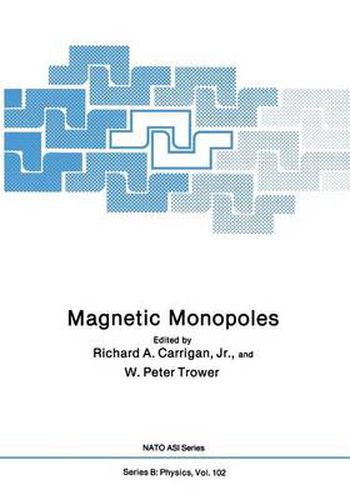Readings Newsletter
Become a Readings Member to make your shopping experience even easier.
Sign in or sign up for free!
You’re not far away from qualifying for FREE standard shipping within Australia
You’ve qualified for FREE standard shipping within Australia
The cart is loading…






This title is printed to order. This book may have been self-published. If so, we cannot guarantee the quality of the content. In the main most books will have gone through the editing process however some may not. We therefore suggest that you be aware of this before ordering this book. If in doubt check either the author or publisher’s details as we are unable to accept any returns unless they are faulty. Please contact us if you have any questions.
In 1269 Petrus Peregrinus observed lines of force around a lodestone and noted that they were concentrated at two points which he designated as the north and south poles of the magnet. Subsequent observation has confirmed that all magnetic objects have paired regions of’ opposite polarity, that is, all magnets are dipoles. It is easy to conceive of an isolated pole, which J.J. Thomson did in 1904 when he set his famous problem of the motion of an electron in the field of a magnetic charge. In 1931 P.A.M. Dirac solved this problem quantum mechanically and showed that the existence of a single magnet pole anywhere in the universe could explain the mystery of charge quantization. By late 1981, theoretical interest in monopoles had reached the point where a meeting was organized at the International Centre for Theoretical Physics in Trieste. Many mathematical properties of monopoles were discussed at length but there was only a solitary account describing experiments. This imbalance did not so much reflect the meeting’s venue as it indicated the relative theoretical and experimental effort at that point.
$9.00 standard shipping within Australia
FREE standard shipping within Australia for orders over $100.00
Express & International shipping calculated at checkout
This title is printed to order. This book may have been self-published. If so, we cannot guarantee the quality of the content. In the main most books will have gone through the editing process however some may not. We therefore suggest that you be aware of this before ordering this book. If in doubt check either the author or publisher’s details as we are unable to accept any returns unless they are faulty. Please contact us if you have any questions.
In 1269 Petrus Peregrinus observed lines of force around a lodestone and noted that they were concentrated at two points which he designated as the north and south poles of the magnet. Subsequent observation has confirmed that all magnetic objects have paired regions of’ opposite polarity, that is, all magnets are dipoles. It is easy to conceive of an isolated pole, which J.J. Thomson did in 1904 when he set his famous problem of the motion of an electron in the field of a magnetic charge. In 1931 P.A.M. Dirac solved this problem quantum mechanically and showed that the existence of a single magnet pole anywhere in the universe could explain the mystery of charge quantization. By late 1981, theoretical interest in monopoles had reached the point where a meeting was organized at the International Centre for Theoretical Physics in Trieste. Many mathematical properties of monopoles were discussed at length but there was only a solitary account describing experiments. This imbalance did not so much reflect the meeting’s venue as it indicated the relative theoretical and experimental effort at that point.